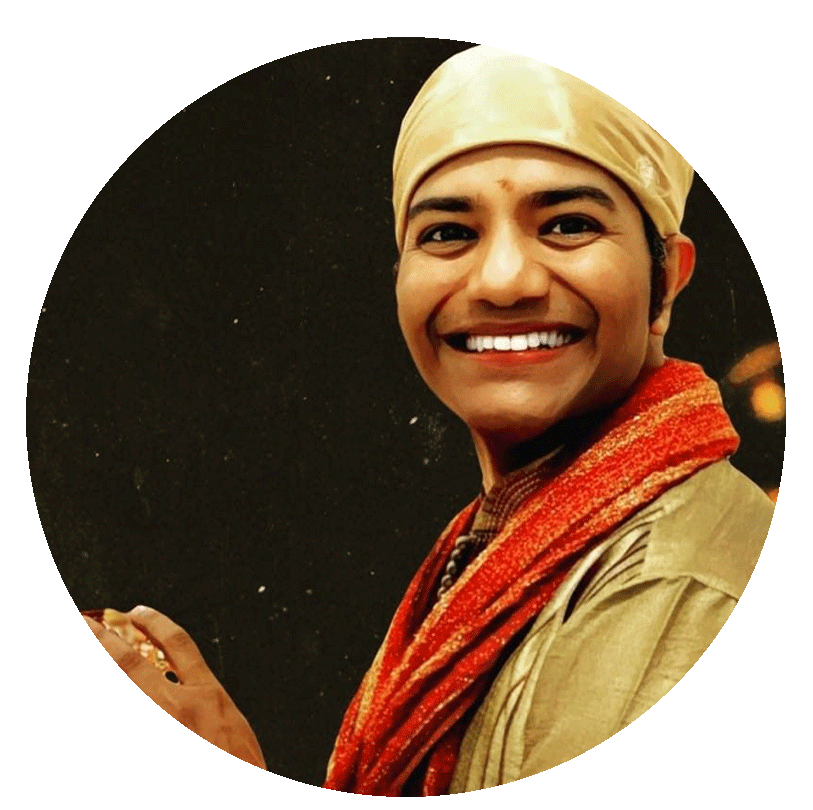Some days you move like water—time thins, work becomes play, intuition leads, and results arrive with surprising ease. Other days, the same task feels like dragging a rock uphill. What changed? Not your talent. Your state.
The West calls this optimal state “flow“. Classical Yoga describes a similar territory as yogaś citta-vṛtti-nirodhaḥ—the quieting of mind-movements—unfolding into dhāraṇā → dhyāna → samādhi. Two languages, one landscape: effort without strain.
Let’s put both maps on the table.
🔬 The Western Map: What Science Sees in Flow
Flow is a measurable shift in brain and body. Researchers (following Mihaly Csikszentmihalyi and others) describe a constellation rather than a single switch:
🧠 Attentional narrow-and-hold
Focus knits itself around a clear goal with immediate feedback. The brain devotes resources to the task and prunes distraction.
🌫️ Transient hypofrontality
Parts of the prefrontal cortex (self-monitoring, time tracking) go quiet for a while. You feel “timeless,” self-consciousness softens, action feels frictionless.
📈 Adaptive neurochemistry
Precisely the cocktail you’d expect for deep engagement: dopamine (salience), norepinephrine (alertness), endogenous opioids (pain gating), and endocannabinoids (novel connections). The blend boosts motivation, pattern detection, and creativity—without the jitter.
💓 Physiology in coherence
Breath steadies, heart rate variability (HRV) improves, and sensorimotor systems synchronize. It’s not laziness; it’s efficient.
Flow, in short, is the nervous system’s elegant economy.
🧘 The Eastern Map: What Yoga Points To
Yogic psychology doesn’t scan the brain; it watches the mind (citta) and energy (prāṇa).
🎯 Dhāraṇā—steady placement of attention.
Like aiming a lens: not wide, not fidgety—precise.
💧 Dhyāna—unbroken continuity of that attention.
The stream flows without sudden boulders of distraction.
✨ Samādhi—absorption, where the sense of “me doing this” thins.
Effort remains, strain dissolves. The Yoga Sūtras describe posture itself as “sthira-sukham-āsanam”: stable and easeful—an image for the whole mind.
From this view, flow arises when prāṇa is smooth, vṛttis (thought-waves) are fewer, and attention rests naturally. Not forced—allowed.
🧭 Same Mountain, Two Trails
Where the maps overlap:
- Clarity & Feedback (West) ↔ Dhāraṇā (East): a single, vivid aim.
- Quiet Self-talk (West) ↔ Nirodha of vṛttis (East): less commentary, more contact.
- Effortless Doing (West) ↔ Sukha in effort (East): work without inner friction.
The labels differ; the lived experience rhymes.
🛠️ Designing for Flow: An East–West Protocol
Not tips. A ritual architecture you can repeat. Think of it as aligning biology, attention, and meaning.
1) 🎯 Calibrate the challenge
Set one clear outcome for the next 60–90 minutes—one. Make it just beyond your current skill (not a cliff, not a kiddie pool). Slight stretch invites the chemistry that makes flow likely.
2) 🔕 Create a low-noise field
Close loops (bathroom, water, charger). Silence notifications. Tidy what’s in your visual field. You’re designing pratyāhāra—senses resting from excess pull.
3) 🌬️ Enter with breath
Two minutes of nāḍī śodhana (alternate nostril) or a 4–2–8 cadence (inhale–hold–exhale). You’re reminding the autonomic nervous system: safe, steady, ready.
4) 🕉️ Plant the identity
A soft saṅkalpa: “For the next 90 minutes, I am the kind of person who gives full, easeful attention to this one thing.” Whisper it. Mean it. Begin.
5) 🕰️ Work in a single arc
No tab-surfing. No peeking. Ride the first 15 minutes gently—like entering cold water. Flow often arrives after the warm-up, not before it.
6) 🧠 When the mind wanders…
Don’t wrestle. Notice. Return to the next true next step. If agitation rises, do three slow breaths, gaze soft, jaw unclenched. Back in.
7) 🌙 Land with grace
Stop at a natural seam (not at a knot). Write a one-line debrief: “What moved?” Close with one minute of stillness. Let the nervous system encode win, not war.
This isn’t about heroics. It’s about conditions.
🍃 The Subtle Levers Behind the Curtain
🔁 Ultradian respect
Human energy runs in ~90-minute waves. Work with the wave; don’t argue with it.
🌡️ State before strategy
If you’re sleep-deprived, inflamed, or jittery, the “discipline” you seek is a physiology away. Warm food, light movement, a breath reset—then strategy.
🧩 Meaning magnetizes attention
Tasks tethered to dharma (your deeper “why”) hold attention longer with less force. Flow isn’t only chemicals; it’s care.
⚠️ Flow’s Shadow (Read This)
Flow feels so good you can chase it for its own sake—scroll, game, thrill, overwork. That’s the counterfeit. Real flow is eudaimonic: it serves growth, truth, or contribution. If you feel empty after, you entered a cul-de-sac of stimulation. Adjust the aim, not just the method.
✨ Closing Reflection
Flow isn’t luck. It’s a conversation between nervous system, attention, and meaning. The West teaches us the levers. The East teaches us the posture. When you blend both, work turns into practice, and practice, quietly, turns into joy.
May your days contain more arcs of effort without strain—more time that feels like you.
🌐 Continue Your Journey
- 🎁 Design your personalized flow ritual in a FREE Intro 1:1 Breakthrough Session → bit.ly/drdeb121
- 🌍 Build daily accountability inside my Global WhatsApp Healing Circle → bit.ly/drdebWA
- 🎥 Practice breath, mantra, and focus drills with me on YouTube → bit.ly/YouTube-DrDeb

Recent Comments